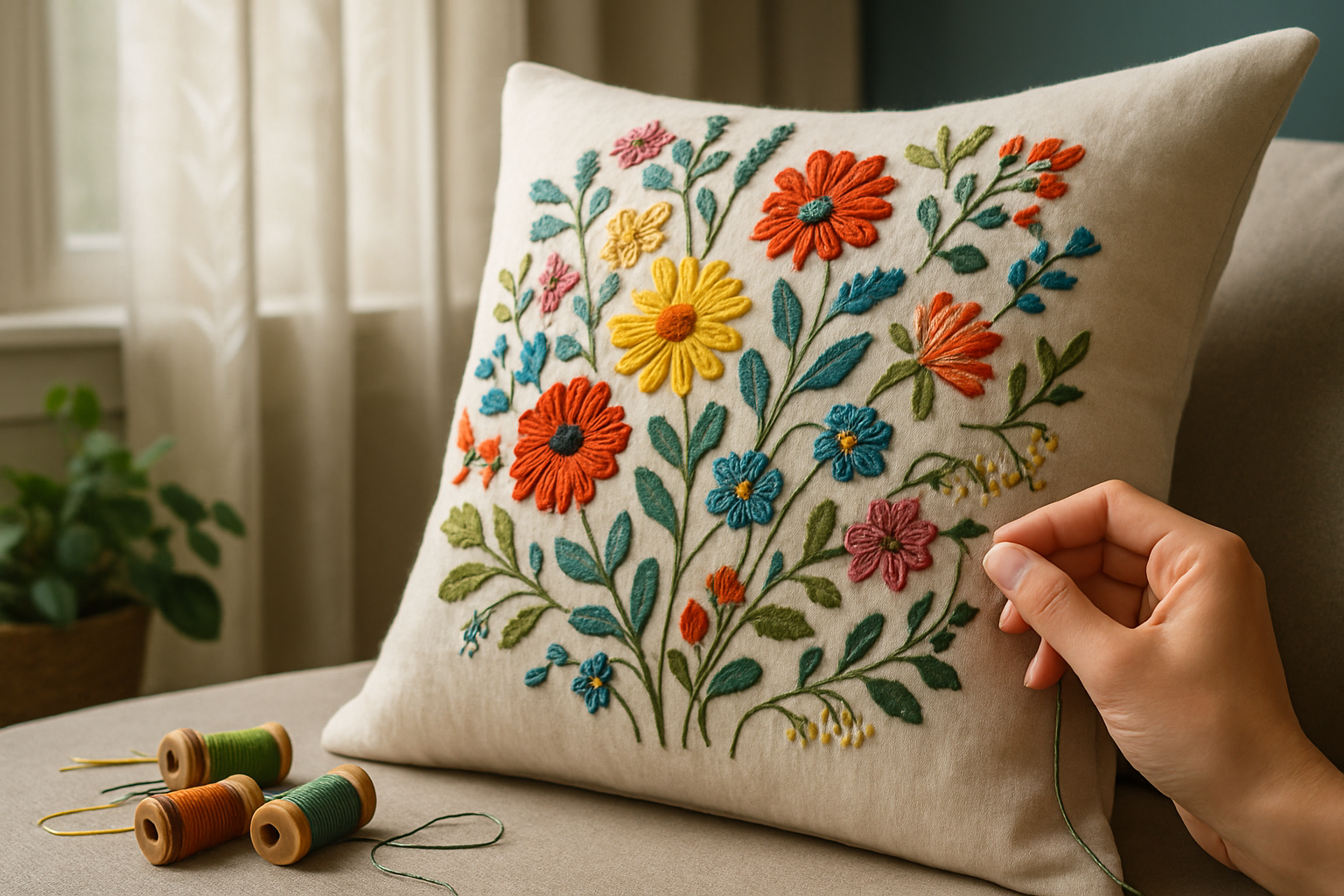Botanical Embroidery: A Blooming Trend in Home Textiles
The fusion of traditional craftsmanship and modern home decor has given birth to a captivating trend: botanical embroidery. This artful technique is breathing new life into pillows, curtains, and upholstery, transforming living spaces into vibrant gardens of thread and fabric. As homeowners seek to bring nature indoors, botanical embroidery offers a tactile and visually stunning solution that marries the delicacy of needlework with the lush beauty of flora.

Fast forward to the present day, and botanical embroidery has experienced a renaissance. Modern artists and designers have reimagined this age-old craft, infusing it with contemporary aesthetics and techniques. The result is a fresh take on floral motifs that appeals to both traditionalists and trendsetters alike.
From Thread to Trellis: The Appeal of Embroidered Flora
The allure of botanical embroidery lies in its ability to add depth, texture, and a touch of nature to any room. Unlike flat printed patterns, embroidered designs have a three-dimensional quality that catches the light and invites touch. This tactile element creates a sense of warmth and intimacy in living spaces, making them feel more inviting and personalized.
Moreover, botanical embroidery offers a level of detail that can’t be achieved through other textile techniques. The precision of needlework allows for intricate depictions of petals, leaves, and stems, capturing the essence of each plant species. From delicate wildflowers to bold tropical foliage, the range of botanical subjects is as vast as nature itself, providing endless possibilities for customization and creativity.
Stitching Sustainability: The Eco-Friendly Aspect
In an era where sustainability is at the forefront of design considerations, botanical embroidery aligns perfectly with eco-conscious sensibilities. Hand-embroidered pieces are often made to last, standing in stark contrast to the disposable nature of many mass-produced textiles. The longevity of these items not only reduces waste but also creates heirlooms that can be passed down through generations.
Furthermore, the resurgence of embroidery has led to a renewed interest in natural fibers and dyes. Many artisans are turning to organic cotton, linen, and wool as base fabrics, while experimenting with plant-based dyes to create their color palettes. This approach not only reduces the environmental impact of textile production but also results in unique, one-of-a-kind pieces that tell a story of craftsmanship and sustainability.
Cultivating Creativity: DIY Botanical Embroidery
One of the most exciting aspects of the botanical embroidery trend is its accessibility to crafters and DIY enthusiasts. With a wealth of online tutorials, kits, and patterns available, anyone can try their hand at creating their own embroidered masterpieces. This democratization of the craft has led to an explosion of creativity, with makers experimenting with different stitches, color combinations, and botanical subjects.
For beginners, starting with simple designs like daisies or ferns can be a great way to learn basic stitches and gain confidence. As skills progress, more complex projects like realistic roses or intricate leaf patterns become achievable. The meditative nature of embroidery also offers a welcome respite from the digital world, providing a tactile and focused creative outlet.
Styling with Stitches: Incorporating Botanical Embroidery in Home Decor
Integrating botanical embroidery into home decor can be as subtle or as bold as desired. A single embroidered throw pillow can add a pop of color and texture to a neutral sofa, while a set of embroidered curtains can become a stunning focal point in a room. For those looking to make a statement, an embroidered headboard or upholstered chair can serve as a unique piece of functional art.
The versatility of botanical embroidery allows it to complement a wide range of interior styles. In a minimalist space, a large-scale embroidered wall hanging can provide a soft, organic counterpoint to clean lines and monochromatic palettes. In a more eclectic setting, mixing embroidered pieces with other textural elements like woven baskets or ceramic vases can create a rich, layered look.
The Future of Floral: Innovations in Botanical Embroidery
As the popularity of botanical embroidery continues to grow, designers are pushing the boundaries of the craft. Some are experimenting with unconventional materials, such as metallic threads or even incorporating small beads and sequins to add sparkle and dimension to their designs. Others are exploring the intersection of technology and handcraft, using digital design tools to create complex patterns that are then brought to life through traditional embroidery techniques.
The future of botanical embroidery also holds exciting possibilities for customization. With advancements in digital embroidery machines, it’s becoming possible to create bespoke designs that reflect personal memories or specific landscapes. Imagine throw pillows embroidered with the flora of your favorite hiking trail or curtains adorned with the wildflowers from your childhood backyard.
In conclusion, botanical embroidery represents a harmonious blend of tradition and innovation in home decor. Its ability to bring nature indoors, coupled with its sustainable and personalized approach, makes it a trend with staying power. As we continue to seek ways to make our living spaces more reflective of our values and experiences, botanical embroidery offers a beautiful and meaningful solution. Whether purchased from skilled artisans or created by our own hands, these stitched gardens promise to add a touch of natural beauty and handcrafted charm to our homes for years to come.





